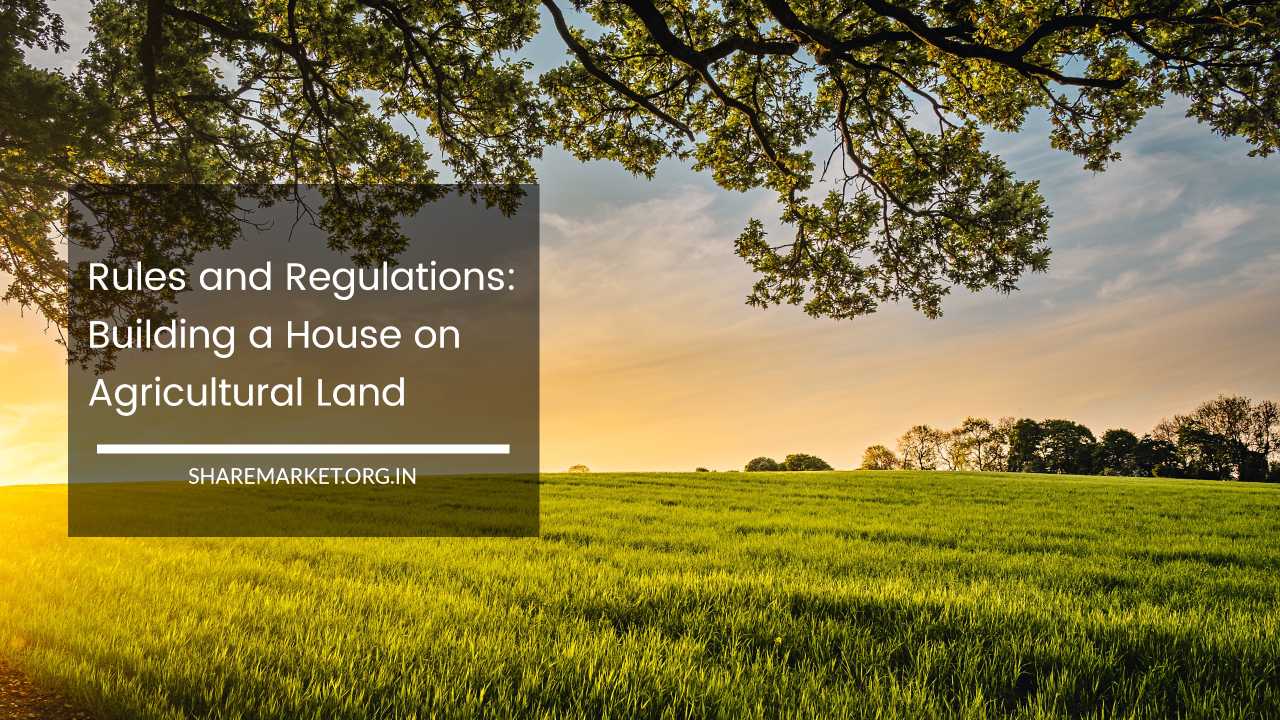Rules and Regulations: Building a House on Agricultural Land

Building a House on Agricultural Land
Building a House on Agricultural Land: Rules and Considerations
With the increasing population and the growing scarcity of housing, people are exploring alternative options, including utilizing agricultural land for residential purposes.
However, it is crucial to be aware of the rules and regulations governing the construction of houses on agricultural land to avoid potential complications in the future.
1. Land Use Conversion: Generally, agricultural land is designated for farming purposes. To build a house on agricultural land, you may need to undergo a land use conversion process.
This typically involves obtaining permission from the relevant government authorities to change the land’s designated use from agricultural to residential.
2. Zoning and Planning Regulations: Each region has specific zoning and planning regulations that determine the permissible land uses and construction parameters.
It is essential to review the zoning regulations of the area where the agricultural land is located to ensure that residential construction is allowed and to understand any specific requirements or restrictions.
3. Building Codes and Permissions: Before initiating any construction, it is crucial to obtain the necessary building permits and approvals.
Compliance with local building codes and regulations ensures the safety and structural integrity of the house. The permitting process may involve submitting detailed plans, obtaining clearances, and undergoing inspections at various stages of construction.
4. Environmental and Ecological Considerations: Depending on the location and environmental significance of the agricultural land, there may be additional regulations to protect the environment, natural resources, and ecological balance.
It is important to adhere to these guidelines and consider the potential impact of construction on the surrounding ecosystem.
5. Infrastructure and Utilities: Assess the availability and accessibility of essential infrastructure and utilities, such as roads, water supply, electricity, and sanitation facilities.
Adequate infrastructure is essential for comfortable living and should be considered before proceeding with residential construction.
6. Consult Professionals and Local Authorities: Engaging professionals like architects, lawyers, and consultants experienced in land conversion and residential construction can provide valuable guidance throughout the process.
Additionally, consult with local authorities and relevant government agencies to understand specific regulations and requirements applicable to the area.
Building a house on agricultural land requires careful consideration of legal and regulatory aspects to ensure compliance and avoid legal issues or the need for demolition in the future.
It is advisable to thoroughly research and consult with experts to navigate the complexities and ensure a smooth and lawful transition from agricultural land to residential property.
What is Cultivable Land
Cultivable land, also known as agricultural land, refers to the portion of land suitable for cultivation and the production of crops.
It is the land used for agricultural activities such as growing crops, cultivating pastures, and maintaining agricultural operations.
Crops are planted and harvested on cultivable land each year, contributing to the agricultural sector and ensuring the availability of food and other agricultural products.
This land is characterized by its fertility, suitable soil conditions, access to water resources, and other factors that support agricultural activities.
It’s important to note that building a house directly on agricultural or cultivable land is generally not permitted. Special permissions and regulations must be followed before constructing residential properties on such land.
The process typically involves land conversion, where the land’s designated use is changed from agricultural to residential or other purposes.
The conversion of agricultural land for residential use varies from region to region and is subject to specific rules and regulations set by local authorities and government bodies.
In some states, the process of land conversion involves certain fees or charges that need to be paid by the buyer or landowner.
The rules and regulations regarding land conversion and the requirements for building residential structures on cultivable land differ across jurisdictions.
It is important to consult with local authorities, land development agencies, and legal professionals to understand the specific procedures, fees, and regulations applicable in your area.
When considering the conversion of agricultural land for residential purposes, it is crucial to ensure compliance with all legal requirements and environmental considerations.
This helps preserve agricultural resources, protect the ecosystem, and ensure sustainable land usage for both agricultural and residential purposes.
Documents Required for Land Conversion:
When considering the conversion of agricultural land for residential or other purposes, certain documents are typically required to initiate the process.
These documents help establish the ownership, history, and current status of the land. While specific requirements may vary based on local regulations, here are some common documents often necessary for land conversion:
1. Identity Proof of Landowner: The landowner’s identity card or any valid government-issued identification document is essential for verifying ownership.
2. Record of Ownership, Tenancy, and Crops: Documents such as land records, including the ownership record, tenancy agreement (if applicable), and records of crops cultivated on the land, provide crucial information about the land’s history and current usage.
3. Sale Deed and Mutation Deed: If the land was acquired through a sale deed or transfer of ownership, the relevant documents must be provided. Mutation deeds, which reflect changes in ownership in official land records, are also typically required.
4. Gift, Partition, or Inheritance Deeds: In case the land was received as a gift, inherited, or involved in a partition, the respective deeds (gift deed, partition deed, inheritance documents) should be provided as proof of transfer or acquisition.
5. No Objection Certificate (NOC): Obtaining a NOC from the Municipal Council or Gram Panchayat is often necessary to proceed with land conversion. This ensures that the local governing body has no objections to the intended change in land use.
6. Survey Map and Land Utilization Plan: A receipt or copy of the survey map, which outlines the exact boundaries and dimensions of the land, is required. Additionally, a land utilization plan may be necessary, describing the intended use of the land after conversion.
7. Land Revenue and Tax Clearance: Proof of payment of land revenue, property tax, and other relevant dues should be provided to establish that there are no outstanding financial obligations related to the land.
8. Litigation Status: It is crucial to verify that there are no pending legal disputes or litigations related to the land. Providing a declaration stating the absence of any litigation or disputes helps facilitate the land conversion process.
It’s important to note that the specific requirements and documents necessary for land conversion may vary based on the location and regulations of the respective governing authorities.
Consulting with local land development agencies, legal professionals, or government officials will provide precise information about the documents required for land conversion in a particular jurisdiction.

















